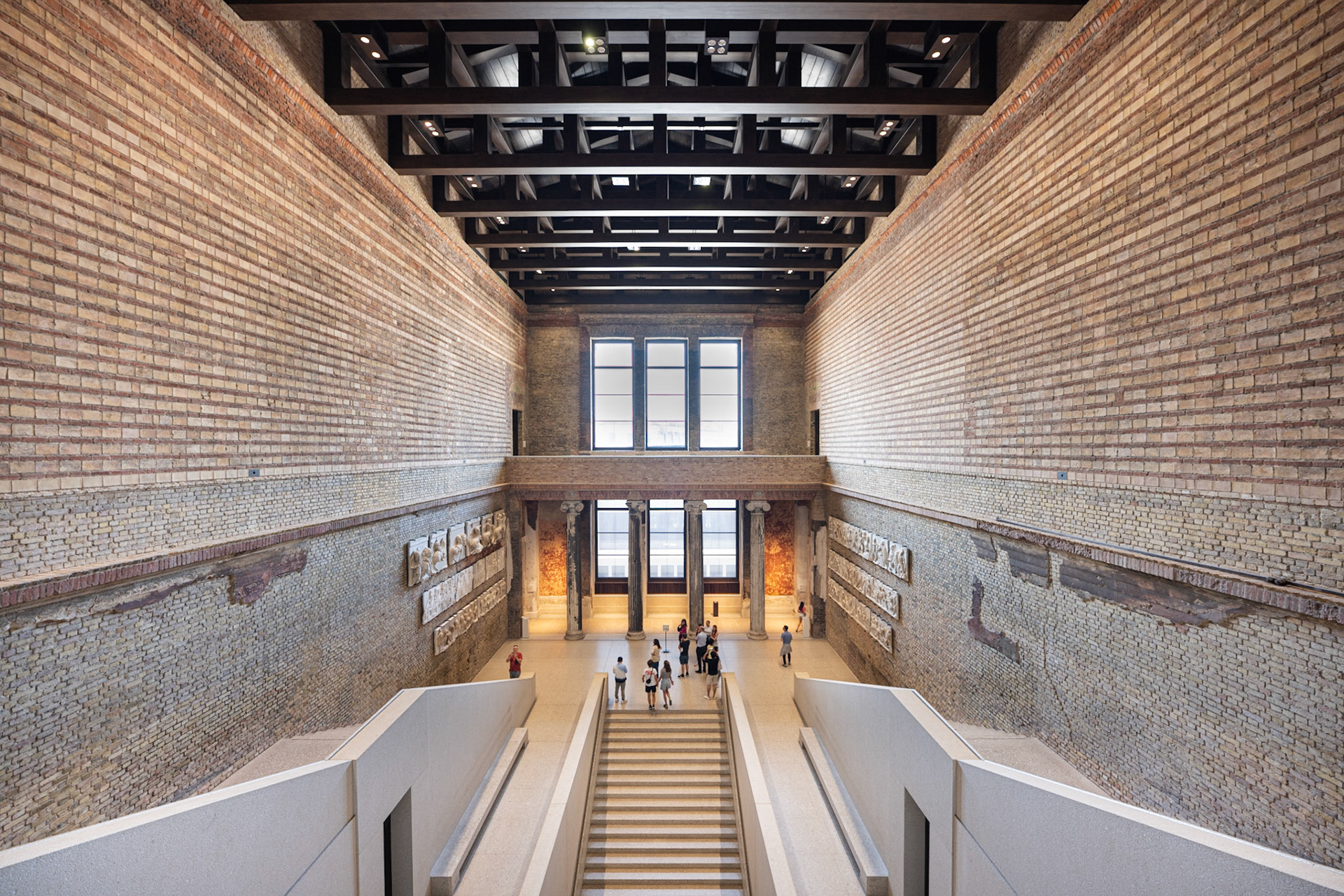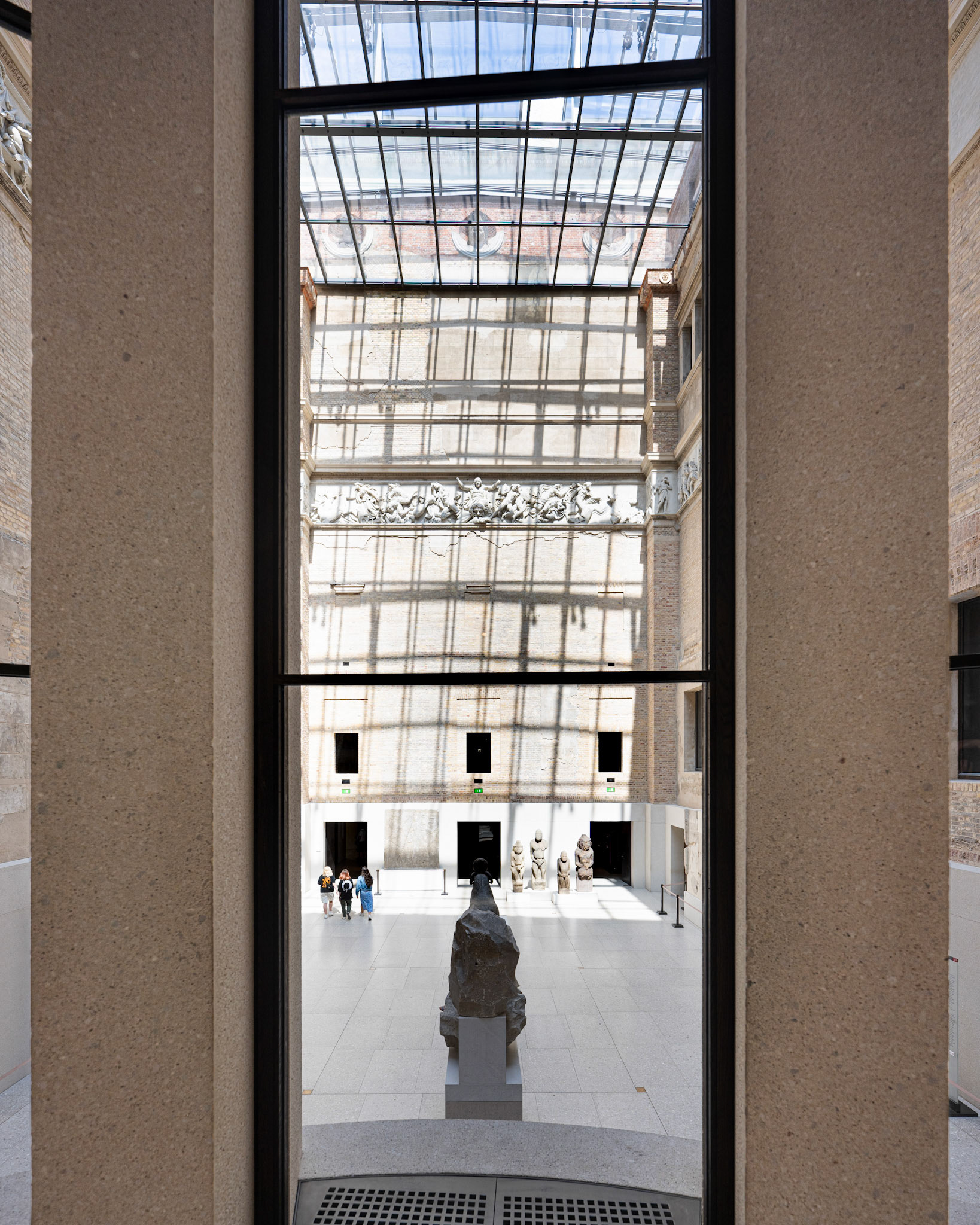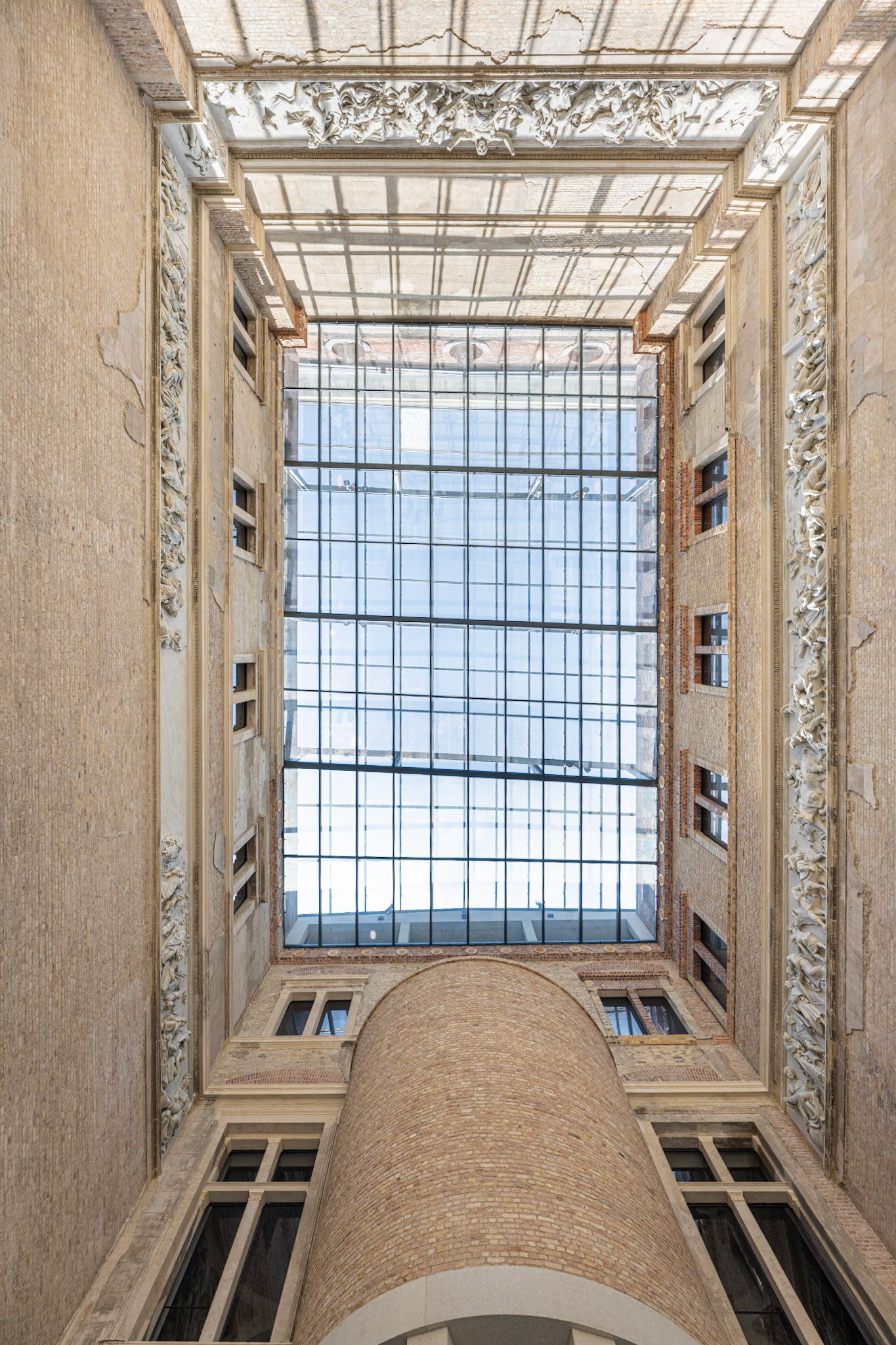The Neues Museum was the second museum to be built on Berlin's Museum Island in order to house the collections that the Altes Museum couldn't accommodate any more. Currently, the Neues Museum is home to the Egyptian Museum, the Papyrus Collection, the Museum of Prehistory and Early History, and parts of the Collection of Classical Antiquities.
The Neues Museum in Berlin was built between 1843 and 1855 in the style of classicism and neo-Renaissance to plans by Friedrich August Stüler. After the damages of World War II and further decay of its ruins, left exposed to nature during the GDR time, the museum was reconstructed in a simplified form by David Chipperfield Architects between 1999 and 2009. In 2010, the museum received the Nostra Award from the European Commission and the Europa Nostra Cultural Heritage Association for outstanding achievement in the field of restoration. In 2011, the European Union awarded the museum the Mies van der Rohe Prize for the successful combination of "contemporary architecture, restoration and art". Also in 2011, David Chipperfield received the German Architecture Prize for the reconstruction of the museum.
At the centre of the museum is the monumental staircase. It is located at the same place as the original staircase, but uses a more minimalist design.

Neues Museum - monumental staircase (David Chipperfield Architects, 1999 - 2009)
The Greek courtyard is now protected from the elements through a glass roof. On display here, with a length of 65 meters the museums largest artwork, is a frieze by Hermann Schievelbein, created in 1851. It was inspired by Edward Bulwer-Lytton's novel "The last days of Pompei".

Neues Museum - Greek courtyard

Greek courtyard with monumental frieze by Hermann Schiebelbein
The Flachkuppelsaal was part of the initial design by Friedrich August Stüler. It was used as the exhibition space for artifacts from Africa and Oceania.

ceiling of the Flachkuppelsaal
You may also like